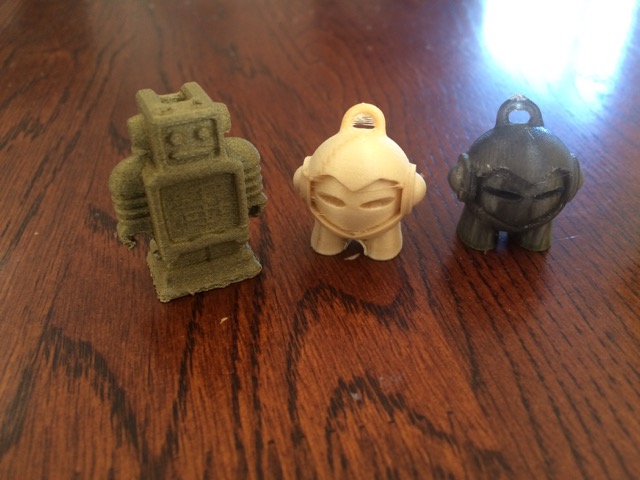Danny from Vivenda is known for his eye for detail and for attaining the absolute best from his range of 3D Printers so when MindKits started production of our own filament, we turned to him for impartial 3rd party testing.
Danny shared his thoughts with us and I'd like to share them with you below.
Note that Danny intentionally didn't do any clean up on these prints so you can see exactly how they come off the printer. The Brass is a good example of where some simple cleanup would make a big difference.
Tim
MindKits Chief Ninja
The PLA (Blue Marvin)
Both the black and the white print fantastically. Slightly less glossy when compared to other's PLA, but not quite matte. Print speed was the standard 90mm/s at 205C (the standard setting I use for all PLA prints). There was no stringing, clumping or degradation of detail. I like this PLA. It's of a high standard and prints very well.
ABS (Not Pictured)
As you know I'm not a fan. I was leaving this one till last in the test run, and then I got swamped. I haven't yet had a chance to go back to this to test.
Conductive (Black Marvin)
I think you mentioned you weren't going ahead with this one. I think it's ABS based. This stuff printed very nicely. It takes up definition like you wouldn't believe. Being ABS based, I did encounter some problems. If your machine isn't suited for printing ABS like mine, you'll have the standard problems. Marvin lifted from the plate and there was also some layer delamination which caused him to split in half. Printed this guy at 80mm/s @ 220C. In terms of material flow and printability, this stuff works well and looks really nice, a kind of satin black finish.

Flexible TPE (Not Pictured)
I wasn't able to print this on my machine. It seems the feeding mechanism isn't suited for the flex and will put a kink in the filament. There's modifications out there that will overcome this barrier. I haven't put that in place yet. I'd be keen to try as printing flex on my machine would be fun. Will follow up as time allows.
PETG (Yellow Marvin)
I wondered about this one. It's an odd yellow colour which I wasn't expecting and there was ribbing on the filament. Even so it didn't make a difference. Based on the spec sheet provided and what I use for Taulman t-glase I printed this at 35mm/s @ 238C. Marvin printed beautifully. Flow was smooth, no clumping or stringing. Very easy to use and put through. I printed off a taulman t-glase PETT Marvin with identical settings for comparison and your yellow PETG came out the better of the two. Might want to look into the colour though. Not sure many would adopt it based on that.

Wood (Wood Coloured Marvin)
Went with standard settings on this. 90mm/s @ 205C. If I'm honest, I think that's too hot. This stuff flows like crazy. So much so in fact that it'll start dropping before it's up to temperature. It will string quite a bit, but nothing that can't be cleaned up. Thankfully no clumping or clogging. It's very plug and play. Interesting observation, the final printed piece is lighter than the comparable pure pla print. Looks amazing too. Super smooth that you can't even see the print lines. I'm keen to get my hands on this and use it to print myself a pair of glasses frames. I think they'd look amazing.

Brass (Brass Marvin and Brass Robot with Large Layers)
I had nothing to compare this to, so I used the same settings as for wood. Due to it's slightly increased weight, it likes to slump a little and drip. There's a little stringing and if there's an overhang it'll droop a little. You can tell it's a bit more viscous by the way it prints. Still it prints very nicely. Good flow, smooth outer finish with a little spaghetti between his legs where there wasn't any support. Personally I reckon he's just going through puberty. Again, this is another one I'd love to get my hands on and print stuff with. It's got a heft behind it, a noticeable weight that makes you think it's more than plastic.
My thoughts over all
Other than the flexible, all the materials are standard plug and play. Anyone could load this up like any standard filament and get printing within minutes. There's no hassle in using it. They all print beautifully. In fact I'm very impressed by the definition. Now, each machine will have a slightly different settings, but the base line settings are good to work from. In terms of the wood and brass, I may try turning the temperature down slightly to see if that reduces the stringing a bit (especially the wood).
TL;DR: This shit is good. I like.